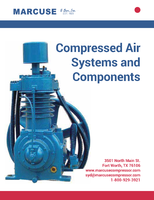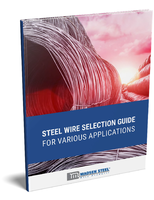Revised EU RoHS Directive published.
Share:
Press Release Summary:
Revised EU Restriction of Hazardous Substances Directive has been published and is expected to go into effect on July 21, 2011. Revised RoHS Directive now applies to all electrical and electronic equipment, not just a few select categories. Due to IPC's aggressive lobbying efforts, revision does not restrict any additional substances. Four substances, however, are identified for priority assessment in a nonbinding recital: HBCDD, DEHP, BBP, and DBP.
Original Press Release:
It's Official! Revised EU RoHS Directive Published
IPC Successful in Efforts to Keep Additional Substances Restrictions Out
BANNOCKBURN, Ill., USA, - The revised European Union (EU) Restriction of Hazardous Substances (RoHS) Directive was published today in the EU Official Journal. The Directive is expected to go into effect on July 21, 2011, twenty days after publication. Member States will have 18 months to transpose the Directive into national law. Member States' regulations are expected to take force no later than January 2, 2013.
"IPC has advocated over the past two years that any changes to the RoHS Directive be underpinned by a solid scientific examination," says Fern Abrams, IPC director, government relations and environmental policy." Due to IPC's aggressive lobbying efforts, the revised RoHS Directive does not restrict any additional substances. Four substances, however, are identified for priority assessment in a nonbinding recital: Hexabromocyclododecane (HBCDD), Bis (2-ethylhexyl) phthalate (DEHP), Butyl benzyl phthalate (BBP), and Dibutyl phthalate (DBP).
"As an industry, we were extremely successful in convincing EU lawmakers of the complexities and implications of restricting substances without conducting thorough scientific analyses of those substances and their potential alternatives," Abrams adds. The methodology for evaluating substances for priority assessment is congruent with the EU Registration, Evaluation and Authorisation of Chemicals (REACH) Regulation, which has a robust, scientific evaluation process for evaluating and restricting chemicals.
The revised RoHS Directive now applies to all electrical and electronic equipment (EEE), not just a few select categories. Category 8, medical devices, and Category 9, monitoring and control instruments, will come into scope by 2014. Category 11, all other EEE not covered by any other category, will come into scope by 2019. The exemptions policy will also change. Industry, instead of the EU government, will now have to prove the necessity of an exemption. Exemptions will also have expiration dates and companies will need to submit renewal applications at least 18 months before the exemptions expire in order to the EU to consider renewing the exemptions. The revised RoHS Directive will be a CE Marking Directive, which requires manufacturers, distributors and importers to accurately label EEE manufactured or sold in the EU.
A copy of the final revised RoHS Directive is available at
http://eur-lex.europa.eu/LexUriServ/LexUriServ.do?uri=OJ:L:2011:174:0088:0110:EN:PDF.
For information on IPC's lobby efforts, visit leadfree.ipc.org/RoHS_4-1-2.asp.
About IPC
IPC (www.IPC.org) is a global trade association based in Bannockburn, Ill., dedicated to the competitive excellence and financial success of its 2,900 member companies which represent all facets of the electronics industry, including design, printed board manufacturing, electronics assembly and test. As a member-driven organization and leading source for industry standards, training, market research and public policy advocacy, IPC supports programs to meet the needs of an estimated $1.85 trillion global electronics industry. IPC maintains additional offices in Taos, N.M.; Arlington, Va.; Stockholm, Sweden; Moscow, Russia; Bangalore, India; and Shanghai, Shenzhen and Beijing, China.




